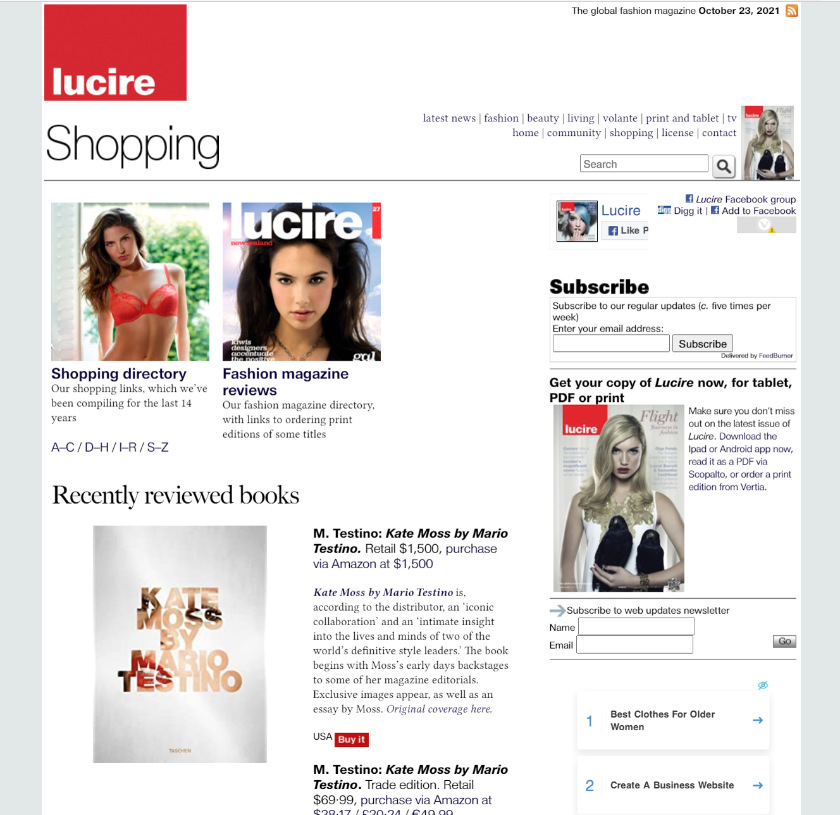

A decade separates these two incarnations of Lucire’s shopping home page. Some Facebook gadgets were added during the 2010s and the magazine cover was updated, but it was woefully out of date and needed to be refreshed.
It’s very unusual for us to go into the less-frequented pages in Lucire and adapt them to a new template before doing a major one such as the fashion index page. But sometimes you go with the creative flow, so it was the turn of the ‘Newsstand’ pages plus the shopping home page, which hadn’t been updated in seven years (and most of it hadn’t been touched for ten).
Needless to say, on the latter, almost everything was out of date. We’ve removed the links to the shopping directory, which last existed to support the print magazine as it was in the mid-2000s. Since then, we haven’t really had a shopping section in print, and we ceased to update it much online.
What was disappointing to note, after my lament about the disappearance of so many fashion websites earlier this year, that even more had closed down, so much so that the three ‘Newsstand’ pages have come back down to two (as it was in the 2000s). There are still some that have not been updated in years, but we have maintained the links for historical purposes.
Poking about the directories did lead me to lucire.com/xp, a framed page with content for our mobile edition in 2000 that was compatible with Plucker. Long before cellphones became the norm, we were already catering for portable devices. I knew we had a Plucker edition, but had forgotten about the xp directory till tonight.
The copy on that page reads, ‘Lucire Express was the hand-held version of Lucire, powered by Plucker. With more recent developments in syndication and content management, support for Express has been discontinued.’
It seemed logical that cellphone browsers would be developed to reduce the content of high-res pages to make them readable, but that is yet to happen (unless one goes into a simplified view mode). To think that programmers found a way to do that in the 2000s. How times have changed, with what appears to be a slowing down of innovation—forcing us to adapt to the technology (developing mobile-friendly themes in-house) rather than the other way round.







